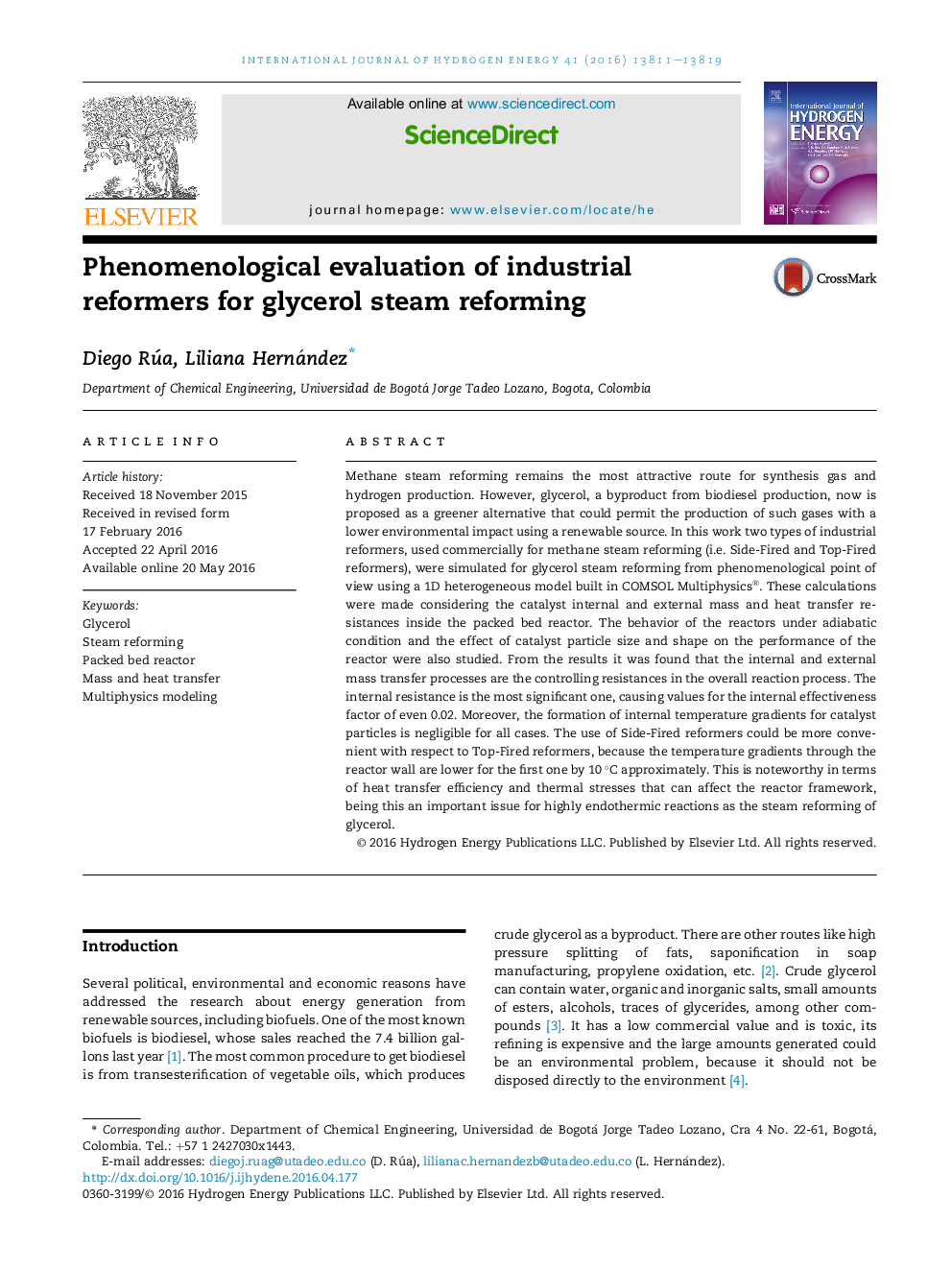| Article ID | Journal | Published Year | Pages | File Type |
|---|---|---|---|---|
| 1276496 | International Journal of Hydrogen Energy | 2016 | 9 Pages |
•Simulation of a packed bed reactor for glycerol steam reforming.•Reaction system simulated using top and side fired industrial reformers.•Internal mass transfer process has an effect on the glycerol conversion.•Guidelines for designing similar systems can be deduced.
Methane steam reforming remains the most attractive route for synthesis gas and hydrogen production. However, glycerol, a byproduct from biodiesel production, now is proposed as a greener alternative that could permit the production of such gases with a lower environmental impact using a renewable source. In this work two types of industrial reformers, used commercially for methane steam reforming (i.e. Side-Fired and Top-Fired reformers), were simulated for glycerol steam reforming from phenomenological point of view using a 1D heterogeneous model built in COMSOL Multiphysics®. These calculations were made considering the catalyst internal and external mass and heat transfer resistances inside the packed bed reactor. The behavior of the reactors under adiabatic condition and the effect of catalyst particle size and shape on the performance of the reactor were also studied. From the results it was found that the internal and external mass transfer processes are the controlling resistances in the overall reaction process. The internal resistance is the most significant one, causing values for the internal effectiveness factor of even 0.02. Moreover, the formation of internal temperature gradients for catalyst particles is negligible for all cases. The use of Side-Fired reformers could be more convenient with respect to Top-Fired reformers, because the temperature gradients through the reactor wall are lower for the first one by 10 °C approximately. This is noteworthy in terms of heat transfer efficiency and thermal stresses that can affect the reactor framework, being this an important issue for highly endothermic reactions as the steam reforming of glycerol.
